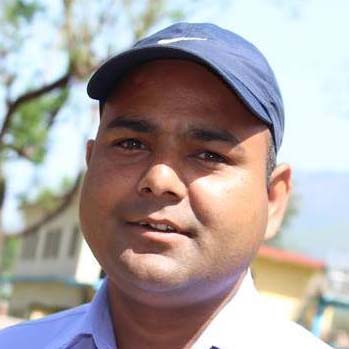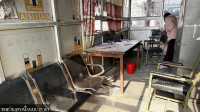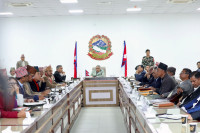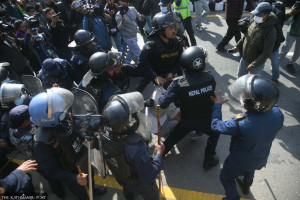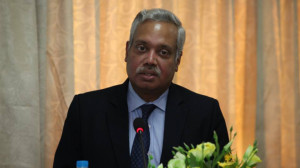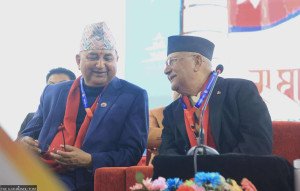National
Floods and landslides in India claim Karnali’s poor every year
Dozens die each year. 21 remain missing after the August 5 flooding in Uttarakhand state. Families get little or no compensation as most migrants work informally without contracts.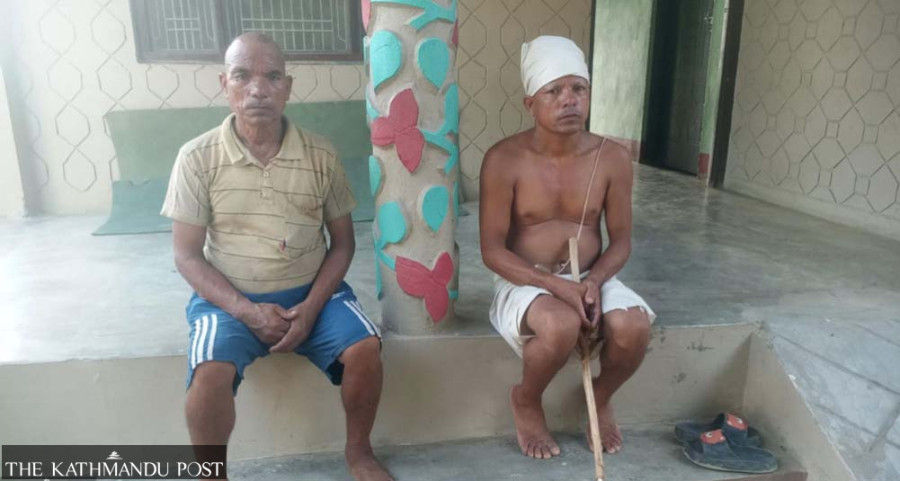
Krishna Prasad Gautam
Every monsoon, hundreds of people from Karnali, Nepal’s largest and remotest province, risk their lives in India’s flood- and landslide-prone areas for seasonal work. Many never return.
On August 5, a cloudburst in Dharali, in the Indian state of Uttarakhand, triggered flash floods in the Khirganga river, sweeping away at least 21 Nepalis, according to the Nepali Embassy in New Delhi. Thirteen of them are believed to be from Kushe Rural Municipality in Jajarkot, a hill district in Karnali. Their families, who rushed to the disaster site, have started returning home in despair as search efforts yielded no results.
“We suspect they were buried in the landslide,” said Bhadra Bahadur Singh of Talegaon. His relatives Karna Bahadur, Ram Bahadur, Man Bahadur, Nim Singh, and Rabin Singh went missing. “We can’t even perform their last rites as there’s no certainty [of their death].”
In July last year, a landslide in Kyara of Shimla, in Himachal Pradesh, had killed three members of a single family from ward 9 of Tribeni Rural Municipality in Rukum West. Dev Bahadur Oli, his wife Bhima, and their teenage son Mohan, who had gone for seasonal labour, perished in the landslide. Their family has yet to get any compensation.
“There’s no relief unless you fight a court case,” said Hari Bahadur Khadka, chairman of ward 9 of Tribeni Rural Municipality. “The case has yet to be finalised. The family is struggling to survive after losing three members in the landslide, and they still rely on India for work as their own harvest doesn’t last three months,” Khadka explained their situation.
Before that, in August 2023, three young men from Kalikot—Prakash Tamata, Tek Bishwakarma and Devi Bishwakarma—died in a landslide at Gaurikund in Rudraprayag (in Uttarakhand state), while carrying loads for Hindu pilgrims visiting the Kedarnath Temple.
Data from the Karnali Province Police Office shows that in the past five years, 39 Karnali residents have died in India due to floods, landslides, and other accidents, with five still missing. In fiscal year 2023-24 alone, 13 people died, and nine more died in the last fiscal year of 2024-25. Police say these figures are likely underreported, as many incidents are never recorded.
“Thousands go to India for work, often to risky areas,” said Deputy Inspector General of Police Madhav Shrestha, Karnali’s police chief. “Season after season, they die in disasters, but many cases never reach our office.”
Migrant advocacy groups say those affected rarely get adequate relief. “Unless the Nepal government makes diplomatic efforts or victims work for formal institutions with accident coverage, families get nothing,” said Tek Bahadur Khatri, president of the Karnali Ekata Club in New Delhi. “Most are paid only basic funeral expenses by local contractors.”
Uttarakhand and Himachal Pradesh draw thousands of Karnali’s poorest each year to work as farm hands, construction labourers, porters, and carriers for pilgrims and tourists. Many leave after planting rice in June and return for Dashain, heading back again in October after the harvest.
“There’s neither enough grain at home nor enough income from India to secure a decent life. But with little education, locals from here can’t get jobs in big cities, so they opt for seasonal work despite the dangers,” said Hari Chandra Basnet, chairman of Kushe Rural Municipality in Jajarkot. He estimates that about 7,000 locals go to India each year from Kushe alone.
Poverty has deepened after the Jajarkot earthquake in 2023, forcing many people to India for work. “Families leave children behind in makeshift shelters to earn enough for food and clothing. There is no alternative as their harvest lasts hardly three months,” said Tanka Bahadur KC, a local teacher from ward 4 of Kushe Rural Municipality.
Local working conditions are precarious—no insurance, no standard wages, no benefits. “If someone dies, it’s settled with a small funeral payment,” KC added.
The 2021 census puts Karnali’s population at about 1.69 million, with nearly 46 percent unemployed. Around 514,818 people are in foreign employment, of whom 442,743—about 86 percent—work in India, according to the Karnali Province Planning Commission.
While some work in factories, hotels, and other businesses in Indian cities like Delhi and Mumbai, those in Uttarakhand and Himachal Pradesh mostly take up daily-wage labour in hazardous environments. “Low pay, no contracts, and high disaster risk—that’s their reality,” said Kushe vice-chair Devika Kumari Singh.
Experts say there is no one to look after the safety and welfare of Nepalis working in India. “In 2013, after the massive flooding and landslides in Kedarnath that killed around 6,000 people, media reports said nearly 300 Nepalis were missing, but neither Nepal nor India conducted a thorough investigation,” said Kamal Lamsal, associate professor at Mid-Western University.
Civil society leaders argue that entrenched local inequalities push people to migrate. “Development projects and employment programmes are dominated by the well-connected. With high taxes, rising living costs, and construction jobs replaced by bulldozers, the poor are left with no choice but to cross the border in search of jobs,” said Durga Prasad Sapkota, a civil society leader.




 19.12°C Kathmandu
19.12°C Kathmandu